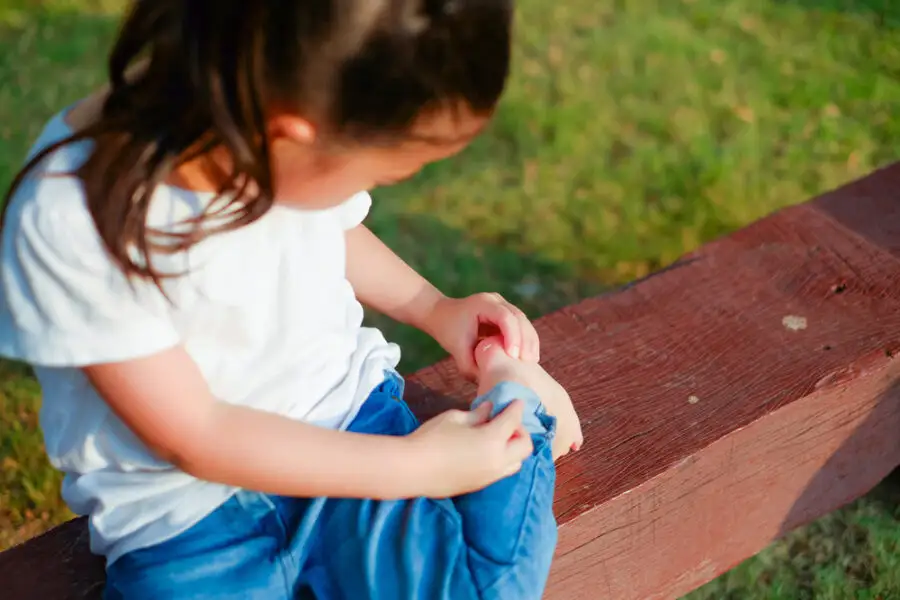
Children’s foot problems are more common during summer, when heat, humidity, and outdoor activities expose their feet to friction, infection, and minor trauma. From blisters and black toenails to athlete’s foot and plantar warts, these issues can disrupt the fun if not addressed promptly.
Fortunately, most of these can be prevented with simple habits. And when they do occur, safe home treatments often provide relief. This article outlines the most frequent foot problems during summer, with practical tips to manage and prevent them.
How to Prevent Children’s Foot Problems in Summer
How to Treat Foot Blisters in Children
Blisters frequently emerge after a long day of play in the heat, particularly when wearing new or ill-fitting shoes. They can be caused by friction and moisture, which weaken the skin.
What to Do
Clean the area gently. Do not pop the blister unless it is very painful. If necessary, use a sterilized needle and cover the area with a soft bandage. Keep it dry.
Prevention
Opt for breathable footwear and moisture-wicking socks. Avoid stiff or overly tight footwear.
Plantar Warts
These skin infections are caused by a virus, often caught in public showers or pools. They can be painless at first but later become uncomfortable when walking.
At-home Care
Use a salicylic acid treatment from the pharmacy and follow the instructions carefully. If the wart multiplies or persists, consult a healthcare professional to reduce the risk of spreading it to others.
Black Toenails or Nail Injuries
A rock, a ball or a tight shoe can cause bleeding under the nail, turning it dark and sometimes painful.
How to treat
Apply ice early to control swelling. Clean gently if the nail is cracked. Watch for signs of infection, like swelling or odor. In most cases, the nail grows back naturally.
Ingrown Toenails
Teens are especially prone to ingrown nails, often due to cutting them too short or wearing narrow shoes. Symptoms include redness, pain and possible infection.
Care tips
Soak the foot in warm salt water twice a day. Apply an antiseptic. Insert a small bit of cotton under the nail edge to help guide its growth.
Athlete’s Foot
This fungal infection thrives in warm and damp areas. It causes itching, irritation and cracked skin between the toes.
Prevention
Use sandals in public showers or locker rooms. Dry feet thoroughly, especially between toes. Change socks daily.
Treatment
Apply antifungal cream. Tea tree oil may help, but test a small area first to avoid skin irritation.
Are Crocs and Flip-Flops the Right Choice for All Day?
These footwear options are convenient and easy to wear, but they may not be the best choice for extended periods of time. They provide limited arch support and cushioning, and their stability is limited, especially on uneven surfaces.
A better option for long walks or active days is to use well-fitted sports sandals or your child’s favorite sneakers. They offer more support, reduce foot fatigue and lower the risk of injury.
Pour les sorties actives ou les longues journées à l’extérieur, privilégiez les sandales de sport bien ajustées ou les espadrilles préférées de votre enfant. Elles offrent un meilleur maintien, réduisent les risques de blessure et sont souvent plus confortables sur de longues distances.
Frequently Asked Questions About Children’s Foot Problems in Summer
Should a blister be popped?
Only if it is very large or painful. Always clean it first and cover it afterward.
Can plantar warts disappear without treatment?
Yes, but the process can take several months. Treatment usually helps reduce the spread and speeds up recovery.
Is it serious if a toenail falls off?
It is not usually dangerous. If there is no sign of infection, it will grow back on its own.
Children’s feet go through a lot during the summer. By staying vigilant, parents can reduce the risk of children’s foot problems during summer. Most foot problems that occur seasonally can be avoided by wearing appropriate footwear and maintaining good hygiene. If something does happen, a calm approach and the right care help ensure the fun continues.
To learn more or find a clinic, visit PiedRéseau Clinics